Orrorin tugenensis
The first bipedal hominid?
A video about Orrorin tugenensis|
|
EUGENE M. MCCARTHY, PHD GENETICS
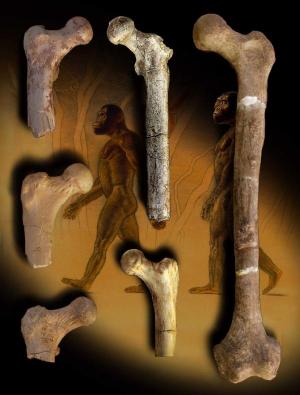
|
|
Early upright walking. A 6-million-year-old thighbone, or femur (center), of Orrorin resembles 2-3 million year old thighbones of australopithecines (left, bottom). Thighbones of Homo (right) mark a transition toward a more modern gait about 2 million years ago. Image: Artwork and composite by John Gurche, photograph by Brian Richmond. |
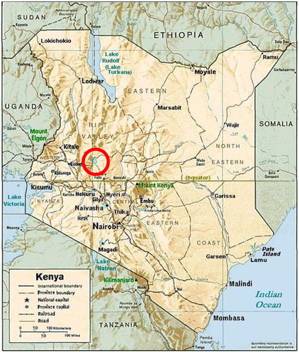
|
|
Fossils assigned to Orrorin were found near Lake Baringo in western Kenya. |
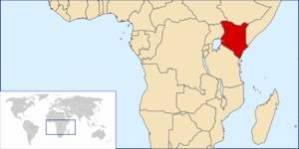
|
|
Location of Kenya Credit: Vardion |
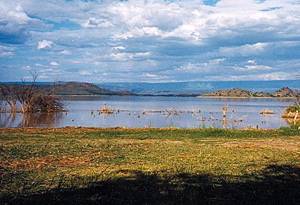
|
|
Lake Baringo in Kenya's Great Rift Valley (click to enlarge) Image: Doron |
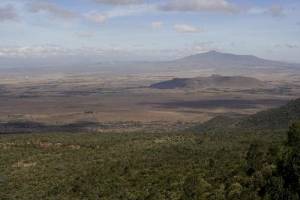
|
|
Great Rift Valley |
Perhaps we are not from the apes alone? 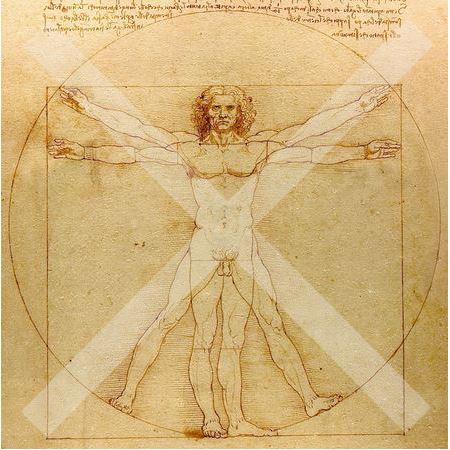
|
Facts about Orrorin tugenensisHabitat: Open woodland. Pronunciation: ō-ROAR-ən or o-roar-RIN TOOG-ə-NEN-səs. Etymology: Orrorin means "original man" in the Tugen language and tugen refers to the Tugen Hills, where fossils were found (Senut et al. 2001). The Latin suffix -ensis was added to tugen to produce tugenensis. The name thus has the meaning "original man from the Tugen region" |
Orrorin tugenensis was named in July 2001 on the basis of fossils discovered in the Lukeino Formation, near Lake Baringo in western Kenya (Senut et al. 2001).
The fragmentary remains include portions of arm and thigh bones, lower jaws, and teeth. They date to between 6.1 and 5.8 mya and are therefore of Miocene age. They were discovered by a expedition led by Brigitte Senut and Martin Pickford of the Muséum national d'Histoire naturelle in 2000.
This hominid is the only member of the genus Orrorin. The scanty remains assigned to Orrorin tugenensis suggest it was bipedal (unlike Sahelanthropus tchadensis, which was once billed as the earliest hominid, but now considered a Miocene ape).
The limb bones, about 50 percent longer than those of Lucy, suggest that Orrorin tugenensis was about the size of a chimpanzee. Its discoverers have claimed O. tugenensis was adapted to both bipedality and tree climbing, and that it was a direct human ancestor, with the australopithecines as an extinct offshoot not ancestral to modern humans. Other scientists are skeptical of these claims, due to the highly fragmentary nature of the remains (Aiello and Collard 2001). But an additional paper (Galik et al. 2004) has provided further evidence of bipedality in this form. The Orrorin femur is more similar to that of H. sapiens than is Lucy's. The brain size of this hominid is unknown, since there is no skull material allowing cranial capacity to be measured.
Fossils of other organisms from the Lukeino Formation show this hominid lived in a dry evergreen forest habitat, which suggests it probably had a diet similar to that of a modern ape. This contradicts the many theories depicting earliest humans as savanna hunters (Orrorin tugenensis remains long predate stone tools and the first use of fire). Thus, if the bipedality of O. tugenensis is confirmed, the only possible conclusion will be that human bipedalism actually arose in a forest-dwelling ancestor and not in the descendants of a quadrupedal form that moved out into the open savanna.
Interesting facts about other members of genus Homo:
Australopithecus bahrelghazali >>